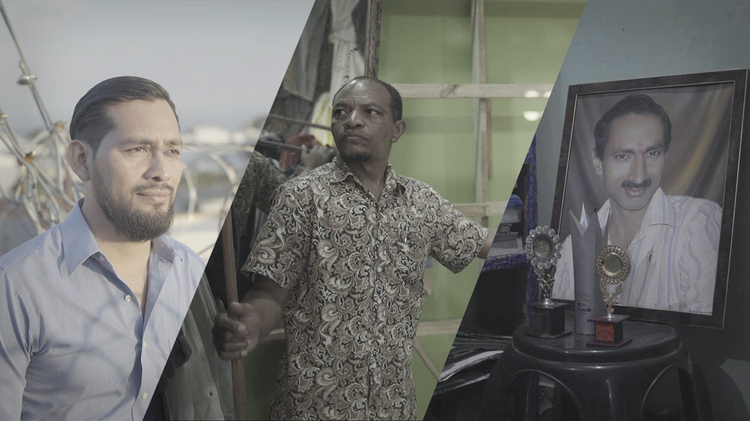
Mines’ dirty secrets echo on three continents
2019년 06월 21일 11시 24분
A group of fishermen from an indigenous community in Guatemala demanded to know more about the environmental impact of a ferronickel mine established on their ancestral land. One of them was killed, and a local reporter was criminalized for covering the story. Forbidden Stories, an international consortium of 40 journalists publishing in 30 media organizations around the world, joined forces to continue the reporter's work. This is part of the “Green Blood” series, a project pursuing stories of journalists who have been threatened, jailed or killed while investigating environmental issues.
If it were not for a journalist taking pictures that day, some might claim that it is unclear how Carlos Maaz’s last moments unfolded. There was a cloud of tear gas, the chaos of an improvised protest, the echo of bullets and rocks flying through the crowd. In one photograph though, he is seen standing in the middle of the road among protesters, his hands at his side, holding no weapon. A minute later, the body of the fisherman is lying on the pavement and a policeman, recoiled in the back of a pickup truck, gun drawn, is aiming toward the camera. The green imposing mountains of Santa Cruz remain impassive in the background, witness to a murder committed by a man in uniform. For a long time, the series of photographs was the only concrete piece of evidence of what happened that day.
According to his wife, Maaz's body was left there for half a day before villagers, realizing authorities would not come to move the body, picked him up themselves and buried him. Carlos Maaz was a member of the Maya Q’eqchi’ community in Guatemala, an indigenous group with a special attachment to the land. He was an artisanal fisherman, worried about suspected contamination of the lake that was his livelihood. He was also a father and a husband.
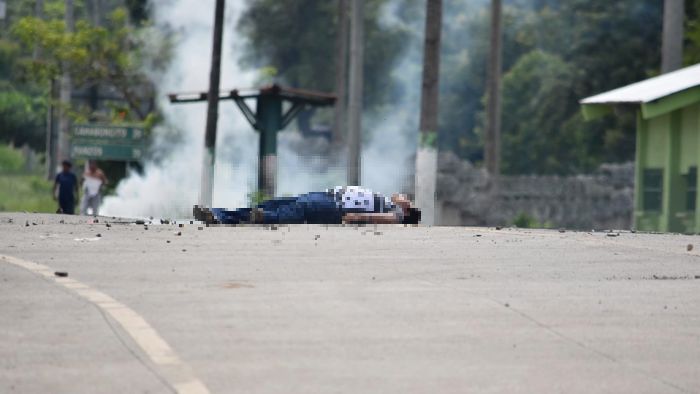
“He provided for us and took care of us,” says his widow Cristina Maaz Pop. “When he was murdered, I didn't even think about being happy. Since that day I don't feel at home anymore. And now there is no one to help me.”
The company fishermen blame for their worry is Solway, a Swiss group originally operating in Russia and a holding company in Malta. It arrived in El Estor – a remote municipality hidden in the middle of mountains and hills – back in 2011 to take over a ferronickel mine named the Fenix Project, selling the alloy of iron and nickel internationally to various steel manufacturing companies.
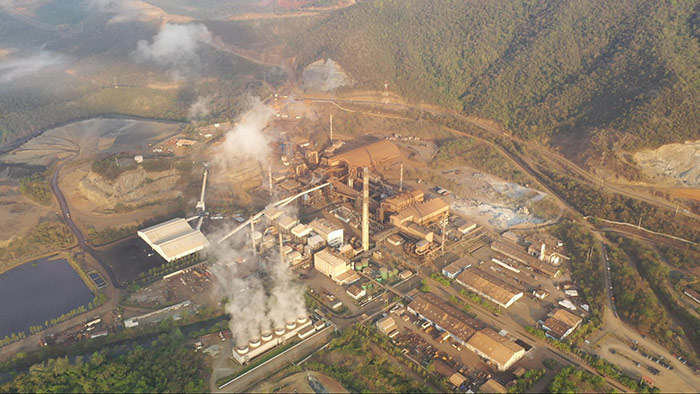
The police immediately held a press conference and denied that anyone had died during the protest. This denial was simply a lie according to Carlos Choc, a journalist with the Maya news website Prensa Comunitaria, who had taken the photo of Maaz's lifeless body. The community website had just started a yearlong project covering the social and environmental impact of the mine. For a long time, the reporting project stopped there, that day. The investigation into Maaz’s death was at a standstill while authorities went as far as to open a criminal case against Carlos Choc.
Forbidden Stories, an international consortium of 40 journalists publishing in 30 media organizations around the world – including Prensa Comunitaria – continued Choc's work. After an eight-month investigation, we found that Guatemalan authorities have lied repeatedly about what happened to Maaz, as well as about the environmental impact of the mine. We also found that reporters investigating this have been criminalized for just doing their jobs. And that the Maya Q’eqchi communities living in El Estor are right to be worried about their land and their health.

The day he died, Carlos Maaz was participating in a protest with a group of fishermen. The source of their concern was a red slick that had appeared in March 2017 on Lake Izabal, Guatemala's largest lake, that they attributed to the ferronickel mine.
They asked for an environmental study. A month later, a governmental body took samples of water and concluded an aquatic weed was to blame for the coloration of the lake.
It was caused by the invasive water plant hydrilla, said the Minister of Environment Alfonso Alonzo, “which is red, the red spot is part of the ecosystem of the lake. That hydril grew, because of the water that is contaminated by bacteria, because of the lack of wastewater treatment plants in the Polochic River.”
Yet, experts we consulted reach a different conclusion. “All the results of the existing analyses show clear evidence of elements characteristic of mining activities,” according to a Brazilian biologist specialized in water pollution, Lucas Barreto Correa. "There are inconsistencies in the official statements, and more consolidated government information is needed regarding the pollution present in the lake."
During a visit of the mine by Forbidden Stories reporters, Compañía Guatemalteca de Níquel (CGN) – the company operates the mine – categorically denied doing any harm to the environment. “It doesn't hurt the lake because, in fact, both Pronico [the metal processing facility] and CGN have environmental monitoring programs,” said Carlos Fernandez, the director of a natural reserve managed by the mine. “We have [International Organization for Standardization] certifications, commitments to environmental impact studies authorized by the Ministry of Environment and the Ministry of Energy and Mines, and those commitments are a very big responsibility that we as a company are fulfilling.” The parent company Solway said the levels or pollution had not changed since the plant’s operation started.
The fishermen did not believe that and claimed that the suspected contamination was affecting them significantly.
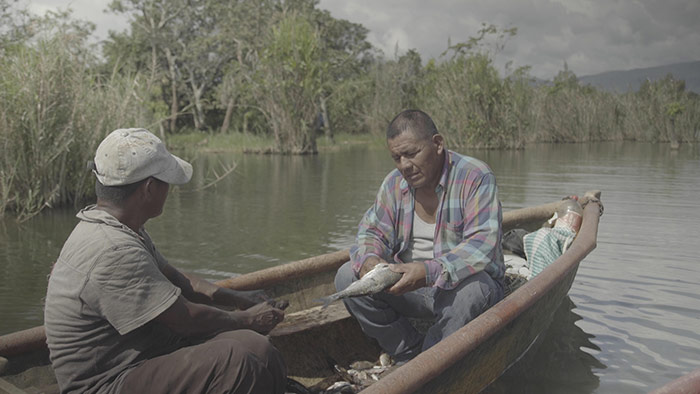
“We won't be able to make a living from fish if they continue to pollute our water,” said Alfredo Maquin, one of the fishermen. “But what are we going to live on, what are we going to give to our children? Where are we going to work?”
Eventually, the Ministry of the Environment announced on very short notice that a meeting would be held 60 kilometers away to address their concerns, according to Father Ernesto Rueda Moreno, a priest who was the local point of contact for authorities.
Yet, there were rumors that criminal proceedings had been opened against them for blocking the passage of the trucks from the mine a few weeks before. “The fishermen feared that they would be arrested,” remembers Father Ernesto.
When they met at dawn on May 27, 2017, to decide whether to go to the meeting, they felt Guatemalan authorities had abandoned them. Their response was to organize a blockade. It was not their first one, and, as it turns out, the police were already on their way. When the fishermen started to throw rocks, policemen answered with bullets. An hour and a half later, Maaz lay bleeding and dead on the ground, shot by a policeman in the chest.
Two years and a ballistics report later, Alonzo still denies there was a death. When journalists from Expresso (Portugal) and Le Monde (France) confronted the Minister of Environment in his office in Guatemala City, he kept circling back to a technicality: “No investigation was made, no investigation could be made, no public prosecutor or anyone from the state officially entered to verify whether that person had died,” he said.
As a result, no one has yet been held accountable for Carlos Maaz's murder. Instead there has been a criminalization of both fishermen and journalists. Arrest warrants issued in August 2017 accused seven of them of “threats,” “incitement to commit crimes” and “illicit association.”

The fishermen were initially legally prosecuted over an earlier demonstration during which they closed a road in El Estor and were charged with detaining mine employees in a car. Choc and his colleague Jerson Xitumul were only mentioned in court files at a later stage. “We believe that the facts presented by the company as an accusation were not sufficient to justify an arrest warrant,” said Choc’s lawyer. “From what we have analyzed in the file, we have seen that it is based on identifications made by the lawyer of the company who was not present at the time of the facts.”
According to José Felipe Baquiax, a judge who presides over the criminal chamber of the Guatemalan Court, the types of charges filed against the fishermen and the journalists are usually intended for organized crime, not protesters. “Freedom of expression is included in the Constitution, so this does not constitute a crime,” Baquiax underlined. “I must tell you that I have not seen here, since I was a judge until I was a magistrate, I have not seen anyone condemn you for having taken part in a demonstration.”
For the two reporters from Prensa Comunitaria, these charges meant the threat of arrest. Jerson Xitumul spent a month in one of the most dangerous jails of the country before being allowed to return home under house arrest. In July 2018, all charges were dropped against him, but he decided to quit journalism.
When Choc saw what had happened to his colleague, he decided to hide. “I had to live clandestinely,” he remembers. “All my heart is in my town, my passion for my journalism work in El Estor, but there were moments when I did despair.” During that time, Choc was separated from his children and had to sell most of what he owned as he could no longer work.
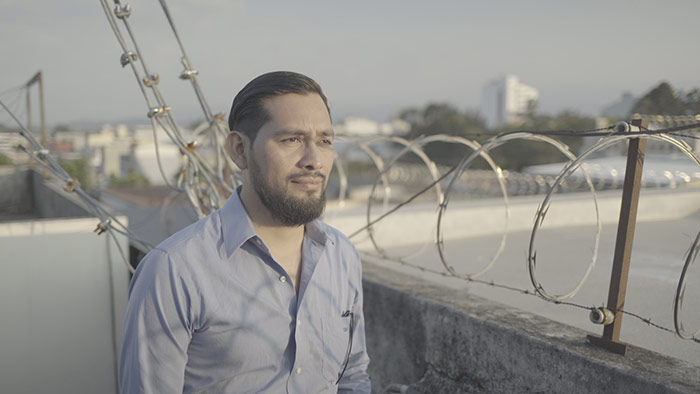
Choc started working in journalism 12 years ago and joined Prensa Comunitaria in December 2016. Prensa Comunitaria is a Maya news agency in Guatemala whose goal is to “document the voice of the community and their different struggles.”
Choc describes his job as simply “telling the truth.” His passion for journalism dates back to his teenage years. “When I was 15 years old, I remember that my father really liked to listen to soccer,” he recalls, smiling. “So I remember when he put on the radio, I sometimes liked to narrate the game. That’s where my work as a journalist started. Then I got to know a little more, and then I also discovered the need that there is in our town to be able to inform on the reality of things.”
Tensions between Maya Q’eqchi communities, authorities and the mine have grown for decades. In El Estor, the ferronickel mining operation cut down the region's giant green lung, the forest. From the sky you can now see an orange stain spreading where trees once stood; buildings and pipes covered in ore dust.

The original expropriations necessary to establish the mine triggered accusations that police and mine security forces had committed rapes and murders in 2007 and 2009. Back then, the mine was owned by a Canadian company, Skye Resources, before it was bought by another Canadian company, Hudbay, which eventually sold it to Solway.
In El Estor, the Russians replaced the Canadians in 2011, but the operating company remains CGN. The company’s industrial safety has been questioned repeatedly. Back in 2016, the explosion of a boiler killed five workers. “Many of us warned them that this boiler was dangerous, and they ignored it,” explained Manuel Ramos Ochoa, a former employee. “They are interested in producing, producing, producing... They don't care about anyone's life!”
The widow of one of the workers killed in the accident tells a similar story. She wishes to stay anonymous out of fear that, if she speaks out, the company might take away financial compensation she receives as a result of her husband’s death.
“When he died, they continued working” she says. Her husband had warned several times about problems with the boiler up until the fatal day of the explosion. “Their boss said that it didn't matter, that he must keep working, that nothing was going to happen. He even said that there were more dead in his country and that was nothing, that they were used to losing people.”
In a statement the chairman of the board of Solway Dan Bronstein confirmed that on the morning of August 13, 2016, the day the boiler exploded, problems had occurred in a temporary waste storage unit auxiliary to the boiler. “The thermal power plant’s personnel detected that the wall of the hopper had worn out,” he said. But “according to the design documentation for the boiler of that type, this type of deviation does not require stopping work,” he said of the decision not to shut down. He added that the company is replacing the damaged boiler with one from a different manufacturer and that another boiler, identical to the one that exploded, has been shut down. Experts hired by the operating company and a government investigation were unable to establish the cause of the explosion, he said.
Outside of the mine, worries about its environmental impact have been growing. Although there isn't definitive proof that environmental concerns raised by fishermen and others were caused by the mining operations, there is evidence of mounting environmental damage. Villagers reported seeing red smoke coming out of the mine at night.
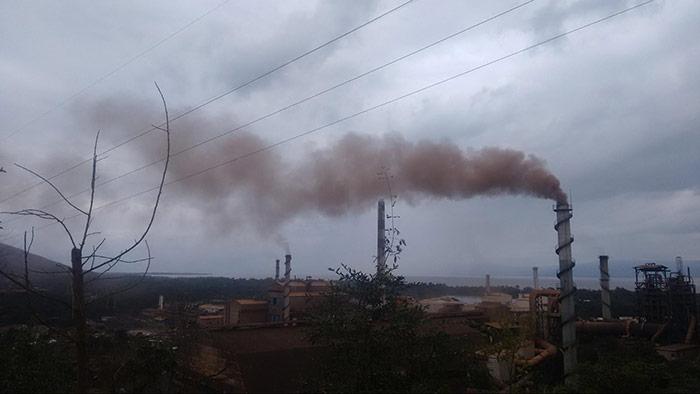
“At night, they remove the filters, when they are processing their products,” said Ochoa. “They think that people don't see it, and in the end, nobody says anything about it.” A mine spokesperson denied their processing plant ever emitted red fumes at night, despite photographic evidence to the contrary.
Forbidden Stories tested the quality of the air over a month using an environmental sensor. The results show peak concentrations of coarse particulate matter six times higher that hourly exposure recommendations by the World Health Organization. “These are the levels that can be measured in China during major pollution episodes,” said atmospheric scientist Boris Quennehen.
In a statement, Solway said that “excessive concentrations of [fine particles] in communities are associated with unrelated to the plant sources of dust: road dust, waste incineration in fields and wood used for cooking.”
“We are worried because that has a long-term impact,” says Anibal Coti, the director of a medical center in El Estor. “There are people who are reported with bronchial asthma problems, bronchitis, pneumonia.”
Confronted with these findings by reporters from Le Monde (France) and Expresso (Portugal) during a visit of mine in April, Maynor Alvarez, CGN’s manager for community affairs, simply answered: “Monitoring is carried out, not only for water: water, dust, noise. And the monitoring is carried out periodically according to what the law orders and is signed. We have faith, I as Pronico, I as authority, I as community, we have faith in these monitorings.”
As for the government, villagers feel that it has largely ignored their concerns.
“Governments never really think about the indigenous people,” said Cristobal Pop, the leader of the fishermen’s association. “What matters to them are only interests, where there is money with the companies, which can give them good profits, regardless of the life of the people, of the peasants, of the indigenous.”
After spending a year and a half in hiding, journalist Carlos Choc was finally able to see a judge in January and succeeded in avoiding pretrial detention. He is now awaiting a hearing on his case.
“I never thought, never in my life I thought during the 12 years that I worked as a journalist, that someday I would go through this because of my job,” he said. “I know the false accusations are going to end. And when that's over, I don't want to cry.”
Reporting by: Forbidden Stories, Marion Guégan, Cécile Schilis-Gallego
뉴스타파는 권력과 자본의 간섭을 받지 않고 진실만을 보도하기 위해, 광고나 협찬 없이 오직 후원회원들의 회비로만 제작됩니다. 월 1만원 후원으로 더 나은 세상을 만들어주세요.